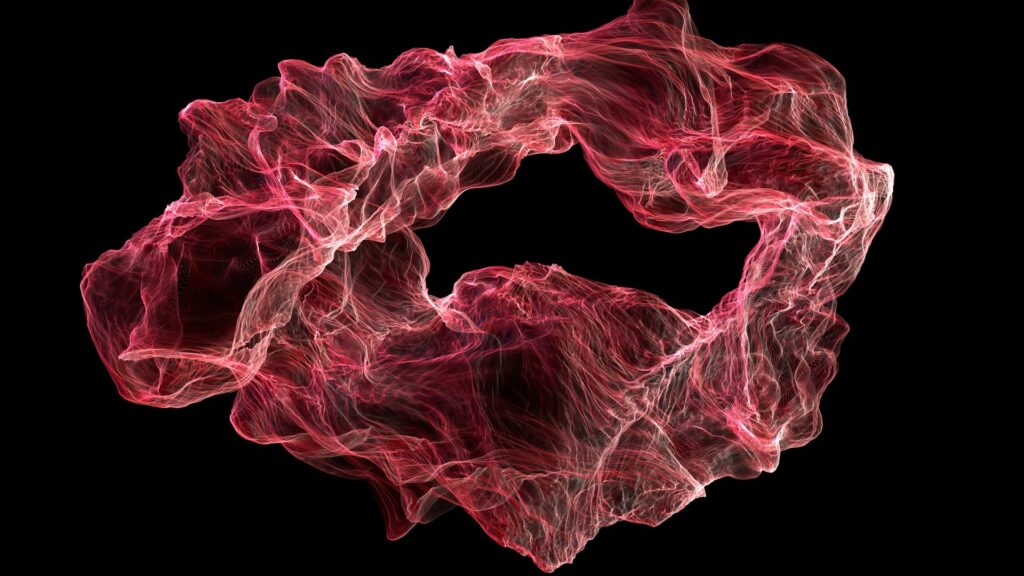The LUX-ZEPLIN (LZ) dark matter experiment, operating nearly a mile underground at the Sanford Underground Research Facility in South Dakota, has released new results that push the constraints on weakly interacting massive particles (WIMPs) to record levels. The work reflects the efforts of more than 250 scientists and engineers from 38 institutions worldwide, with key contributions from researchers such as Prof. Hugh Lippincott from the University of California, Santa Barbara.
Aalbers, J., Akerib, D. S., Musalhi, A. K. al, Alder, F., Amarasinghe, C. S., Ames, A., Anderson, T. J., Angelides, N., Araújo, H. M., Armstrong, J. E., Arthurs, M., Baker, A., Balashov, S., Bang, J., Bargemann, J. W., Barillier, E. E., Bauer, D., Beattie, K., Benson, T., … Zweig, E. A. (2025). Dark Matter Search Results from <math display="inline"> <mrow> <mn>4.2</mn> <mtext> </mtext> <mtext> </mtext> <mtext>Tonne</mtext> <mtext>−</mtext> <mtext>Years</mtext> </mrow> </math> of Exposure of the LUX-ZEPLIN (LZ) Experiment. Physical Review Letters, 135(1), 011802. https://doi.org/10.1103/4dyc-z8zf
While the null result is not an outright discovery, it reshapes the parameter space for future dark matter searches and informs both experimental and theoretical directions.
Prof. Hugh Lippincott from the University of California, Santa Barbara stated,
“While we always hope to discover a new particle, it is important for particle physics that we are able to set bounds on what the dark matter might actually be.”
The LZ detector is a dual-phase time projection chamber filled with purified liquid xenon at cryogenic temperatures. When a particle interacts in the xenon, it may deposit energy via a small recoil of a nucleus. That recoil can liberate prompt scintillation and ionization electrons. By comparing the timing and ratio of these signals, LZ discriminates nuclear recoils (which might be from WIMPs or neutrons) from electron recoils (common radioactive backgrounds).
Surrounding the core is an Outer Detector made of acrylic tanks filled with gadolinium-doped liquid scintillator. This system vetoes neutrons or gamma rays that could mimic WIMPs. If a candidate recoil in xenon is followed by a signal in the OD, that event is discarded.
The entire detector is housed deep underground to reduce the cosmic ray muon flux. Additionally, component materials are selected and handled to minimize internal radioactivity; the detector is built in layers to further shield and tag background signals.
To avoid human bias in interpreting the data, LZ also used a technique called “salting,” where artificial signals were injected during data taking and only removed after the analysis pipeline was fixed.
The recent result is based on 280 live days of exposure, combining a new 220-day run with an earlier 60-day dataset. The total exposure corresponds to 4.2 tonne-years of active xenon.
In the analysis, the collaboration modeled backgrounds thoroughly, taking into account residual radioactivity, cosmogenic neutrons, radon decays, and other sources. After applying cuts and vetoes, they retained more than a thousand candidate events. Statistical fits to expected WIMP recoil spectra and background models showed no excess signal consistent with WIMPs above 9 GeV/c². For a WIMP mass of 40 GeV/c², the upper limit on the spin-independent cross section is about 2.2 × 10⁻⁴⁸ cm², nearly five times tighter than earlier limits.
The experiment also extended sensitivity to so-called “cosmic ray–boosted” dark matter models, where low-mass particles gain extra kinetic energy from cosmic ray interactions. Constraints now rule out stronger cross sections in that regime as well.
The absence of a definitive WIMP signal narrows the possibilities for what dark matter might be. By ruling out more of the parameter space, theorists and experimentalists can refine where to look next. This result, published in Physical Review Letters, represents the most stringent direct detection limits to date.
Many theoretical models that predicted WIMPs in the 10–100 GeV region with higher cross sections are now constrained or disfavored. Other dark matter candidates may lie in different mass ranges or require alternative detection technologies, such as axion detectors or ultra-low-threshold sensors.
The level of control over backgrounds and systematics also stands out. Agreement between data and background models lends confidence that the null result is robust.
Looking ahead, LZ will continue to run with a goal of 1,000 live days by 2028. As exposure accumulates, the sensitivity will extend further. The collaboration is also considering upgrades and planning for a next-generation detector, XLZD, which would have even greater reach.
From an engineering perspective, several features are noteworthy. The level of radiopurity required is extreme, with every component screened and handled to avoid spurious radioactivity. The layered shielding architecture shows how active and passive systems combine to suppress backgrounds.
Accurate calibration and stability are critical, since low-energy signals must be measured precisely over long timescales. The use of salting reflects best practices in data integrity and bias reduction.
Finally, scalability will be central for future detectors. Larger target masses, lower thresholds, and potentially new sensing technologies will demand advances in cryogenics, materials science, and low-noise electronics.
The new LZ results may not have revealed dark matter, but they represent a significant step in refining the search. In rare-event physics, null results play a crucial role: they narrow the options and sharpen the next generation of experiments.
As LZ gathers more data and new detectors come online, the engineering challenge of building ever more sensitive instruments will remain at the heart of the quest to uncover the universe’s hidden matter.

Adrian graduated with a Masters Degree (1st Class Honours) in Chemical Engineering from Chester University along with Harris. His master’s research aimed to develop a standardadised clean water oxygenation transfer procedure to test bubble diffusers that are currently used in the wastewater industry commercial market. He has also undergone placments in both US and China primarely focused within the R&D department and is an associate member of the Institute of Chemical Engineers (IChemE).



